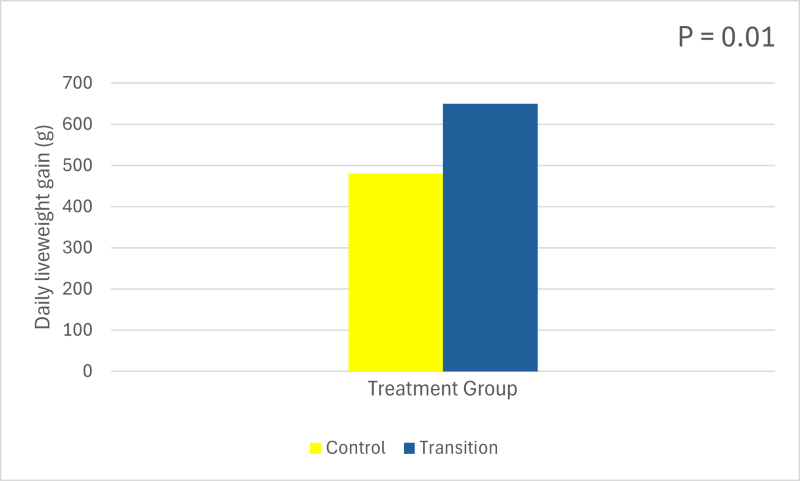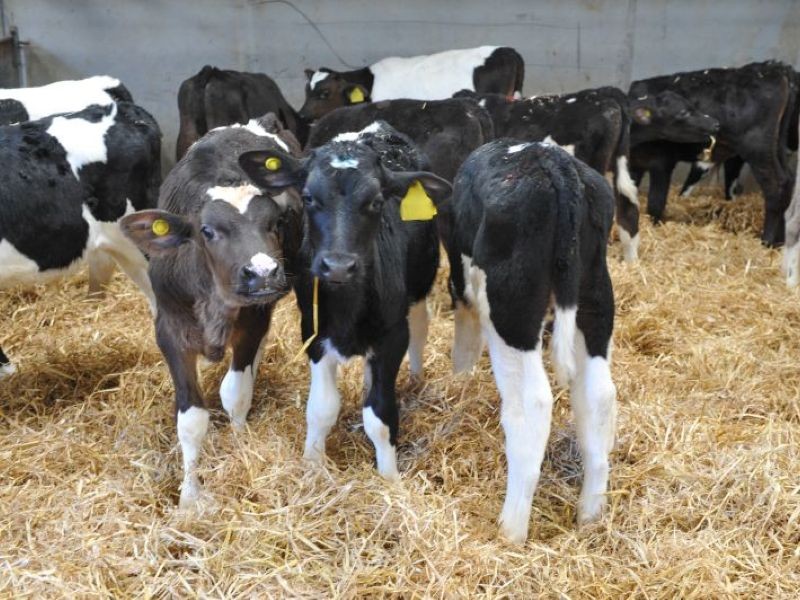How feeding transition milk can optimise baby calf development and performance
A trial has shown weight gain advantages and improved health in calves fed a transition milk (TM) replacer for the 21 days immediately following colostrum feeding.
What is transition milk (TM)?
TM is produced by the cow during the first five to six milkings after colostrum. It is a highly nutritious and immune-boosting milk. Some of the bioactives found in TM may indeed be present for much longer but have not yet been measured.
The French trial
A recent trial in France looked at the effects of feeding a TM replacer, Transformula, manufactured by Bonanza Calf Nutrition.
All the calves received the same colostrum treatment for the first three days after birth. The calves were then split into two groups on day four.
Calf groups:
- Group A: Good quality 40% skim-based milk replacer (MR) at 23% crude protein and 19% fat
- Group B: Transformula TM replacer
The two groups then remained on their assigned milk replacers for 21 days. Precisely the same quantities of powder were fed in each group throughout the trial period.
Results at 30 days:

The results showed that the Transformula group B had, at 650g/calf/day, significantly higher weight gains when they were 30 days old compared to calves that received the standard MR – these grew at 480g/calf/day (see Chart 1).
This meant that in their first month of life, the Transformula group gained an average of 5.1kg, 35% more than calves fed the standard MR.
This extra growth is a consequence of improved development in the baby calf.
Supporting evidence
A similar study (Kargar et al., 2021) saw partial TM feeding extended to three weeks of age.
These calves were weaned on day 60 and monitored until day 90.
One group received two litres a day of TM together with four litres a day of milk while the control group didn’t receive any TM.
The TM group showed significantly higher weights post-weaning, with a 137g/day advantage; overall they grew by an extra 89g/day.
Why transition milk works
A reason for these growth differences is the positive impact the properties found in TM has on development, and the foundation of health up to weaning and beyond.
- TM contains much higher levels of immunity-stimulating components than standard whole milk/MR
- Insulin-like growth factor and glucagon-like peptide 2 enhance the growth of epithelial tissue
- Oligosaccharides promote the closure of the intestinal wall
The first month of life is often difficult for calf rearers as the calves are at their most vulnerable to disease.
Over a quarter of the calves in Group A in the French trial, which received standard MR, experienced scours during the first month of life while there were no cases in the group fed TM replacer. This finding correlates with other recent studies (Kargar et al., 2021).
Repeated feeding of TM helps to promote intestinal development and protects the calf against pathogens. Lining the gut with TM tops up the nutrients and bioactive material to nourish the intestinal wall.
Practical challenges with natural transition milk
For practical reasons it is not always possible to feed cow TM in the first three weeks. There is also the risk of spreading milk-borne diseases such as Johnes and mycoplasma from cow to calf. In addition to this, proper storage of large volumes of transition milk isn’t always possible and the milk is left sitting in buckets from one feed to the next. This can result in calves being fed a bacterial soup, which can cause more harm than good.
Transformula: a practical solution
Transformula is the first TM replacer of its kind.
It contains ingredients that help set the calf up for a productive life, protect and develop the small intestine, optimises health, weight gains, and general contentment in calves which would otherwise receive regular MR.
References:
Kargar, S., Bahadori-Moghaddam, M., Ghoreishi, S.M., Akhlaghi, A., Kanani, M., Pazoki, A., Ghaffari, M.H., 2021.


